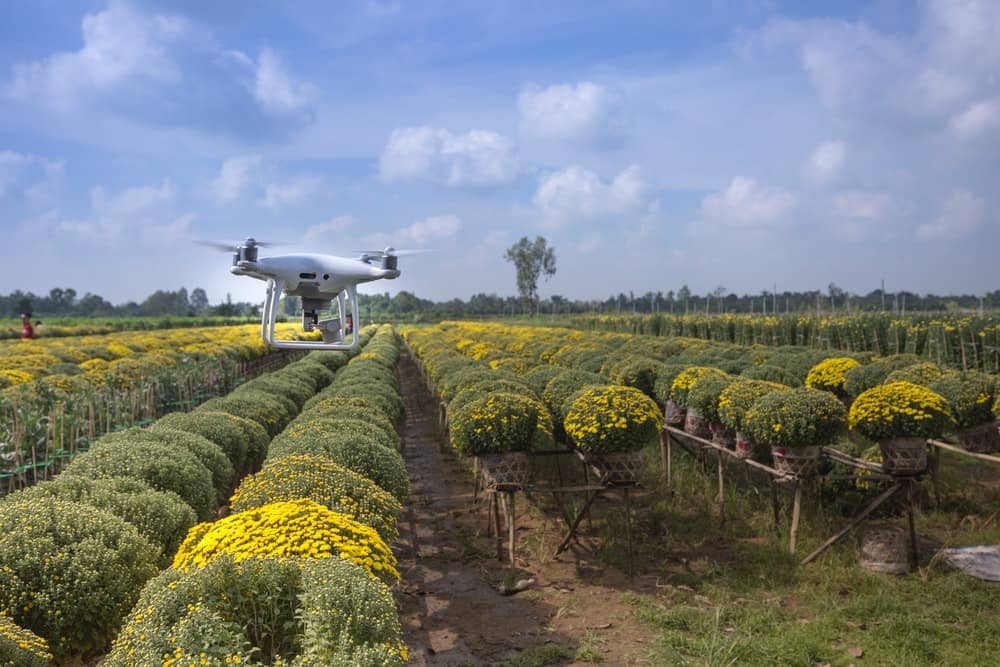Agritech or AgTech is a thing. Using technology in agriculture to increase yield and efficiency of farming processes is not necessarily a novel concept. Internet of Things devices, drone technologies and satellite geo-mapping have all contributed to the advancement of this industry. What is a new concept is the implementation of distributed ledger technology in farming and supply chain management. The agricultural supply chain ported to the blockchain has already been prophesied as the best application of distributed ledger technology.
Giants in the food retail industry such as Carrefour, Walmart, and Unilever have already started relying on the blockchain for tracking the origin of agricultural commodities. According to ReportLinker, the blockchain in food supply chains and agriculture is projected to reach USD 429.7 million by 2023.
Below we explore the most common use cases for blockchain in agri-business and how it helps to tackle some of the problems that independent and large-scale farmers face today.
Problems of Traditional Farming
It is common knowledge that before any crop goes from seed to shelf, from shelf to plate, it will have been managed by multiple unrelated agents. Among these agents are farms, distributors, suppliers, manufacturers and retailers, making countless stopovers in numerous warehouses and transported by several mediums. All things considered, a lot can go wrong at any given step due to error caused by any of the incumbents.
Most problems are caused by the siloed nature of such supply chains. Each and every agent can utilize their own technology, methods and means to accomplish their given tasks. In itself, this not only drastically impacts accountability, but it also creates a series of disparate processes that are expected to function as a well-oiled machine. As you can guess, this is not always the case.
Moreover, due to the sale prices determined by big players in the industry, there is a lack of involvement, or rather, a lack of opportunities for independent farmers to join the playing field.
Applications and Benefits of Blockchain in Agriculture
Inventory management and Traceability
Much to the dismay of crop growers, a lot of the produce needs to be tended to if it is ever to reach the store shelf. For this, farmers resort to numerous techniques to make sure their crops do not spoil while in storage. Employing anything from sensors to designated storage facilities they can prevent the occurrence of mold and keep crops in favorable conditions before they ship out.
While current technologies can prevent early decay, they do little in the way of giving exact figures to account for the full yield. Naturally, this is where blockchain applications in agriculture can lend a helping hand. By keeping a virtual tab on the type of crop and its expiration period, farmers can optimize the management of their resources as well as plan their sale accordingly.
Once crops become a tradable commodity, using a single blockchain, anyone with the right clearance can access the commodities location and track its status. IoT technology has already been involved in keeping track of goods through QR codes and RFIDs. Internet-connected devices and blockchain combined could power an immutable ledger that reflects the location, status, and even crop quality of every unit. For consumers this also means clear traceability of food provenance.
Reduced transactions and transaction costs
According to the Food and Agriculture Organization of the United Nations, around 1.3bln tons of food goes to waste every year. That is the monetary equivalent of $940bln. Much of the food that goes to waste is produced by independent farmers, who have no way of going to market.
Implementing an open platform where suppliers and buyers can negotiate and determine the cost of goods, sans brokers, can optimize the supply chain in a way that also creates a level financial playing field for all farmers. With less agents and intermediaries farmers can benefit from bigger margins and advance sustainable farming practices.
Compliance and quality control
Blockchain has already become synonymous with accountability and fairness. It should come as no surprise that compliance can be guaranteed in agri-tech as well. Food carriers can be made aware of all relevant compliance notices when handling commodities both at a national and international level. It would also signal a hard stop for illicit food trade and food fraud.
Moreover, relevant information on the type of crop, expiration dates, storage conditions and outside factors guarantees crop loss is prevented or minimized. Food survival is highly dependent on seasonality. Adverse weather conditions can or disease can have severe impact on produce and overall financial profitability for farmers.
Public Accountability and Crop insurance
The agricultural industry is oftentimes a publicly subsidized one, meaning taxpayer bills go towards investments in the sector. Like with many forms of financial support, accounting for its use and investment is not always as transparent to those who directly or indirectly contribute to forming the seed of the financial aid package. Essentially, a transparent digital ledger would resolve the accountability issue.
On a similar note, a lack of records also renders farmers incapable of making financial support claims. In many countries, the situation is made worse by legacy technology or by total lack of it thereof. . Most have to drag themselves through bureaucratic processes that have no guarantee of ending in success. The proposition of a straightforward insurance system based on the blockchain can put a full stop to unproductive red tape.
Transparency and overall efficiency
Accessibility to a commodity’s origin, transportation and storage conditions, compliance and quality control — all of these provide the needed transparency of processes and agents in the agriculture industry. It helps lower the chance of intentional and unintentional abuse in the forms of fraud and human error respectively. By streamlining the existing system through a unified registry all parties can achieve peak productivity, fair financial gains and reduce the risks of the unpredictable.
Types of blockchain applicable to agriculture
The Food and Agriculture Organization of the United Nations published a paper titled “E-agriculture in action: Blockchain for agriculture. Challenges and Opportunities”, where it enumerated the three types of blockchains that would facilitate growth and development.
A permissioned blockchain, or simply a private blockchain, would be one with a centralized control body, such as a department, council or ministry, which would have rights to make entries into the digital ledger. Current use cases of private blockchains involve banks and financial institutions. Unlike banks, however, the records on such a blockchain would also be entirely visible to the public for full accountability, thus establishing transparency into the body’s work and management of information and resources.
A permissionless blockchain, or a public blockchain, would be an eclectic one, assembled from numerous players, organized in a decentralized system. Any of the participants would have rights to contribute entries to the ledger and form part of the overall network. To prevent tampering and entry of false information, such a blockchain, according to FAO’s publication would require additional measures of control and supervision.
As a viable alternative, and a spin of the permissioned or hybrid blockchain tech, the publication references a consortium-based blockchain. This type of technology would put the reigns into the hands of a ‘consortium’ of members. Record entry would be organized through a consensus of pre-selected set of ‘decision-making’ nodes.
The ball is already rolling
Companies such as IBM, AgriChain, TE-FOOD, Ripe Technology, Pavocoin, Full Profile have already introduced blockchain development into their agricultural branches and have deployed solutions that foster traceability, crop insurance, market inclusion, and which optimize the food supply chain.
The involvement of hi-tech giants and long-time agricultural industry veterans is no deterrent for exploring the use of encrypted data technologies and consensus-based networks. If anything, the surge of such a technology should encourage smallholding farmers to begin enacting change at a local level through software development practices and the availability of on-demand software engineering services.
The global trend and incline towards blockchain technology will obviously have uneven pace from locality to locality. Though, we know for certain that change begins at the edges of the traditional order of things and agriculture is no exception. If any is the time, it is now that global thinking can result in local action and, hence, be the motivator of change.
21 February 2020

 Pavel Kaplunou
,
Pavel Kaplunou
, 



